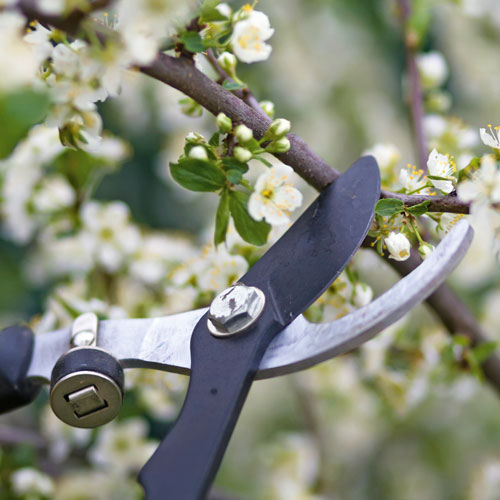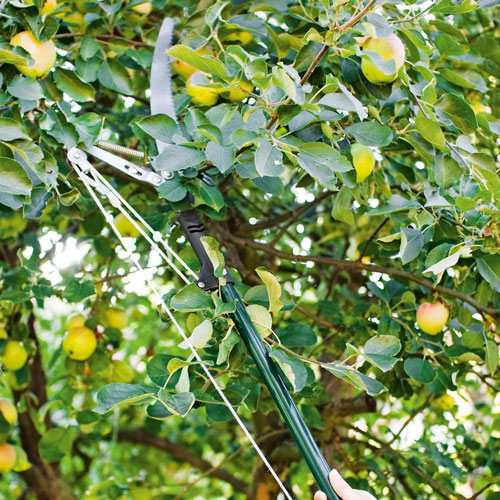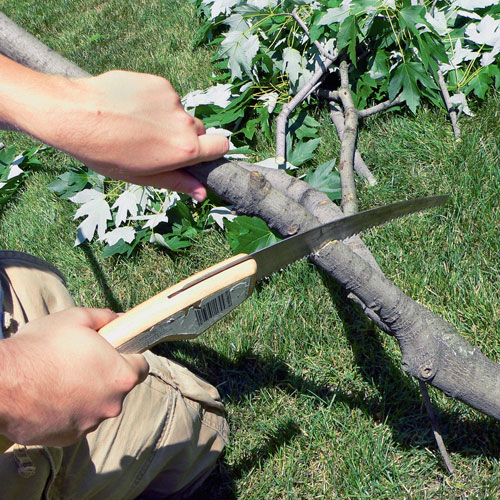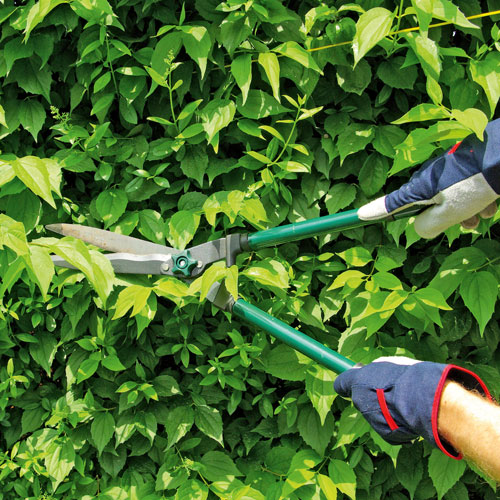
Autumn is a very busy time for anyone wanting to prepare their garden for winter. And according to Julie Willis, horticultural advisor for The Diggers Club, pruning is a plant’s best defence against pests and diseases (diggers.com.au).
Julie says the number one job in autumn is to prune stone fruit after fruiting to avoid the risk of bacterial canker.
This is a rotting disease that occurs in branches that have split, rubbed against each other, or crossed over while growing.
‘Always remove any dead, diseased or crossing branches which may rub and cause a wound that can allow disease to enter the plant,’ says Julie.
What to prune
Fruit trees aren’t the only plants that need a cut during autumn.
‘Cut old canes of blackberries and other hybrid berries to the ground, then tie in new canes which will produce next season’s fruit,’ says Julie.
Cut back bottlebrush and other spring-flowering natives by about a third, removing all seedheads.
Climbing roses that have finished flowering can also be cut back. Or deadhead roses for autumn blooms.
Hedges should be given a trim so the new growth can harden up a little before winter and be ready to burst out in spring.
Seasonal pruning makes a garden look good and provides plant protection all year round, Julie says.
‘Pruning any plant allows air and light to penetrate, promotes the ripening of wood for flower and fruit production, and also helps reduce the incidence of pests and diseases.
‘With regards to timing for pruning, if in doubt, prune after flowering. If the plant is for fruit or berry production, then prune after harvest.’
There is a huge range of pruning equipment on the market, but you should always choose the right type of tool for the job. Look for models with replaceable blades for when you can no longer sharpen the originals.
Secateurs
Trim back small growth and deadhead flowers to reinvigorate shrubs and flowering plants.
Use secateurs on stems and small branches up to 10mm thick. Bypass secateurs are best for fine stems, anvil secateurs for hard woody stems. Look for ergonomic or geared models.
TIP Snips are ideal to use for cutting flowers and lightly trimming soft foliage.

Ask a garden specialist for advice on which secateurs are best for your pruning task
Pole pruners
High branches in productive trees should be cut back to a level where you can reach the fruit. For other trees, prune to shape.
Use a pole pruner, which is like a pair of secateurs on an extendable pole. Power models have a bar cutter at the end and can cut through thick branches with ease.
TIP Pole saws do the same work as powered pole pruners but you provide the grunt.

Ideal for mature fruit trees with hard to reach canopies
Pruning saws
Thick branches growing in the wrong direction or crossing over others need to be removed. Cut them back in stages, making undercuts so the bark doesn’t tear.
Use a pruning saw to give you fine control over cuts. Check whether your model cuts on the push or pull stroke, or on both.
TIP Loppers can be used on small branches up to about 35mm.

Never force blades if they get stuck, use a saw instead.
Shears
Cut hedges back in autumn to promote tight, green growth that has a chance to harden off before there is frost.
Use shears as they let you make very precise cuts for rounded shapes and small hedges. Look for shears with wavy blades and gears to minimise tearing and make the job easier.
TIP Use a powered hedge trimmer to make short work of a long, straight hedge.

Shears are ideal for sculpting hedges and shrubs
Pruning basics
Most plants have specific pruning needs but there are general guidelines to follow when it comes to making cuts and tool maintenance.
- Sharpen cutting tools before pruning to minimise the risk of tearing the bark.
- Disinfect the tools as you go, particularly between each plant. This stops disease being spread around the garden. Wipe with disinfectant wipes or dip into a bucket of diluted bleach.
- Make clean cuts and ensure you’re cutting near a node or close to the trunk. Don’t leave stubs on the side of a tree as they make it easy for disease to get in.
- Cut in stages if you are removing a thick branch. Start on the underside each time then cut from the top to meet the undercut and prevent the bark tearing.
- Finish a branch removal just above the branch collar, which is the knob the branch grew from.
- Trim jagged edges with a sharp pruning knife.
- Seal major cuts with pruning compound, especially if there is borer in your area or the weather is humid. Acrylic paint can also be used, as it eventually washes off but lasts long enough for the tree to form a callus.
- After pruning check the plant is in good condition. Aerate the soil if needed and water with seaweed tonic.
TIP Up to a third of a shrub’s branches can be removed each year without affecting its growth.

